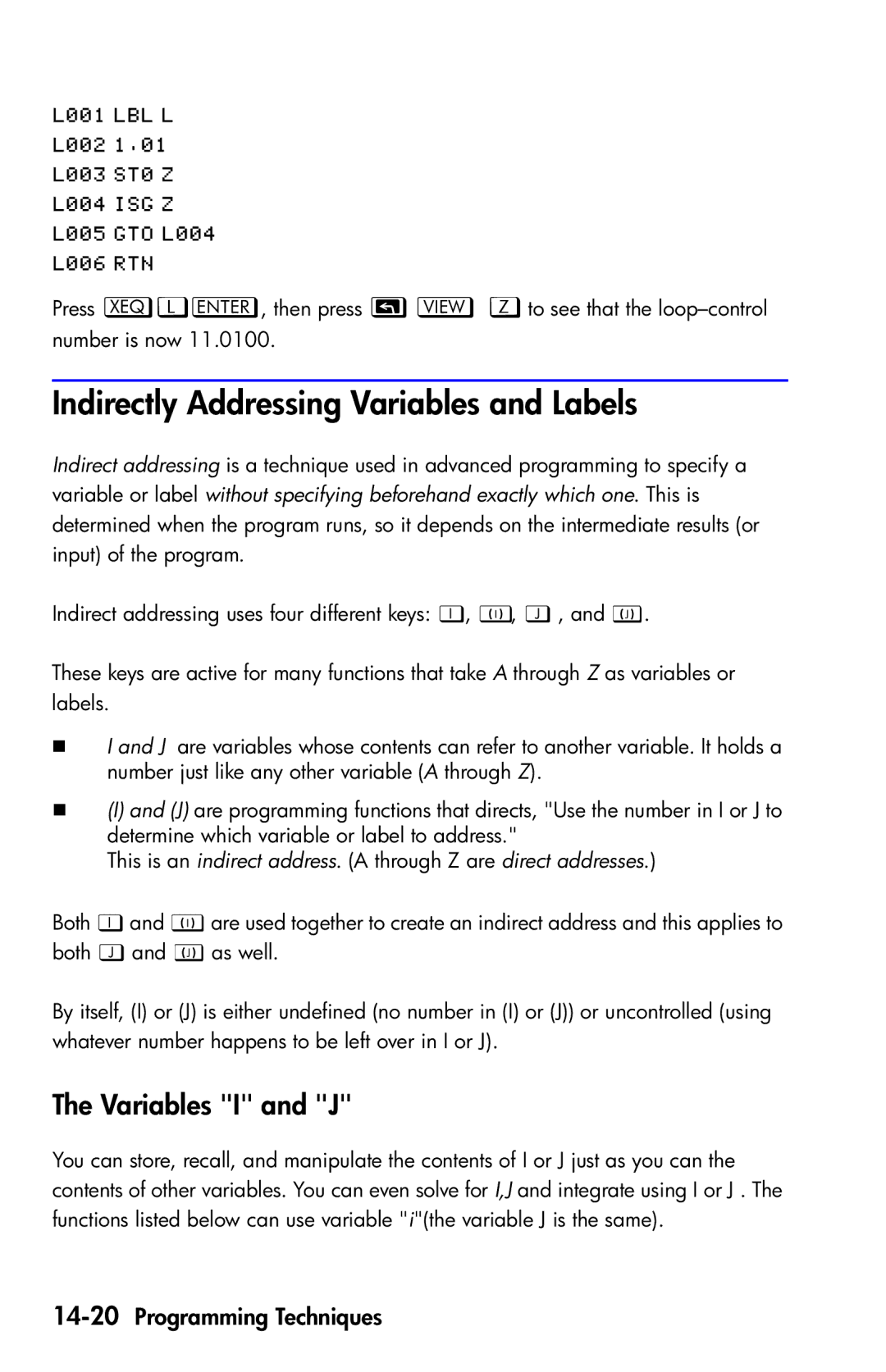Press L, then press Zto see that the
Indirectly Addressing Variables and Labels
Indirect addressing is a technique used in advanced programming to specify a variable or label without specifying beforehand exactly which one. This is determined when the program runs, so it depends on the intermediate results (or input) of the program.
Indirect addressing uses four different keys: 0, 7, 1, and A.
These keys are active for many functions that take A through Z as variables or labels.
I and J are variables whose contents can refer to another variable. It holds a number just like any other variable (A through Z).
(I)and (J) are programming functions that directs, "Use the number in I or J to determine which variable or label to address."
This is an indirect address. (A through Z are direct addresses.)
Both 0and 7are used together to create an indirect address and this applies to both 1and Aas well.
By itself, (I) or (J) is either undefined (no number in (I) or (J)) or uncontrolled (using whatever number happens to be left over in I or J).
The Variables "I" and "J"
You can store, recall, and manipulate the contents of I or J just as you can the contents of other variables. You can even solve for I,J and integrate using I or J . The functions listed below can use variable "i"(the variable J is the same).
